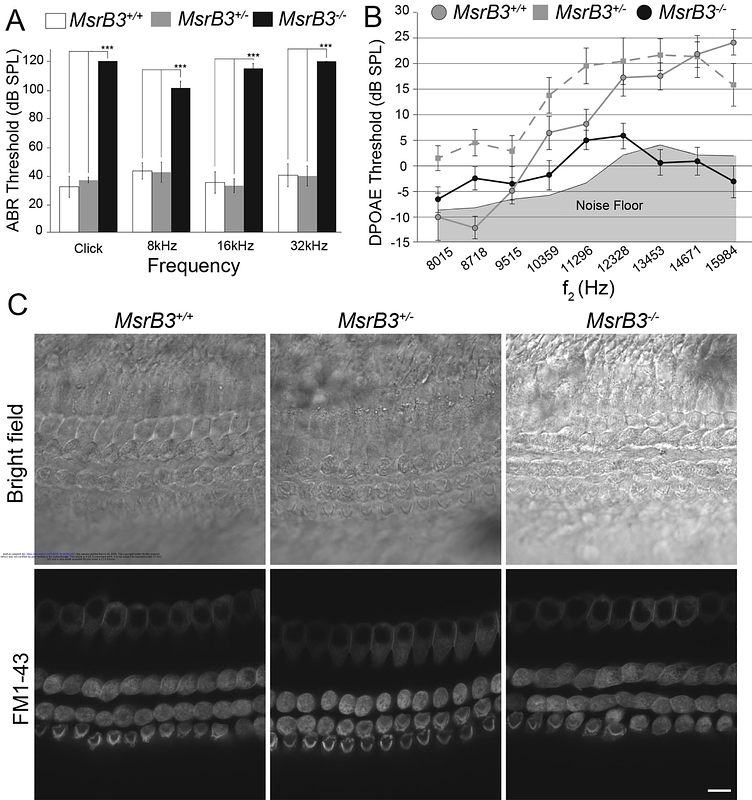Methionine sulfoxide reductase B3 antioxidant activity is indispensable for mouse inner ear cuticular plate structure and hair bundle integrity

Methionine sulfoxide reductase B3 antioxidant activity is indispensable for mouse inner ear cuticular plate structure and hair bundle integrity
Nayak, G.; Richard, E.; Lee, B. C.; Riordan, G. P.; Belyantseva, I. A.; Manta, B.; Friedman, T. B.; Gladyshev, V. N.; Riazuddin, S.
AbstractMethionine sulfoxide reductases (MSR) are enzymes responsible for catalyzing the reduction of methionine-sulfoxides. We previously demonstrated that variants in human MSRB3, a member of the MSR family, are associated with profound autosomal recessive prelingual non-syndromic hearing loss DFNB74. To better understand the role of MSRB3 in the auditory pathway, we generated a complete MsrB3 gene knock-out mouse model of human DFNB74 deafness. The MsrB3 deficient mouse showed profound hearing loss by postnatal day 16 (P16), which was accompanied by hair cell morphological abnormalities including altered stereocilia bundle shape and cuticular plate degeneration followed by hair cell apoptotic death. Although the absence of MSRB3 primarily affected the actin cytoskeleton, rootlets were present, and the expression and localization of major F-actin stereocilia-core proteins were unaltered. Biochemical assays demonstrated that wild-type MSRB3, but not MSRB3 harboring p.Cys89Gly, the same variant reported for human deafness DFNB74, can repolymerize oxidized actin. Consistent with these in vitro data, we observed a decreased ratio of reduced/total actin in the inner ears of Msrb3 knock-out mice. These data suggest a protective role of MSRB3 in the maintenance and maturation of stereocilia and hair cells, a conserved mechanism aimed at maintaining actin redox dynamics in these sensory cells.